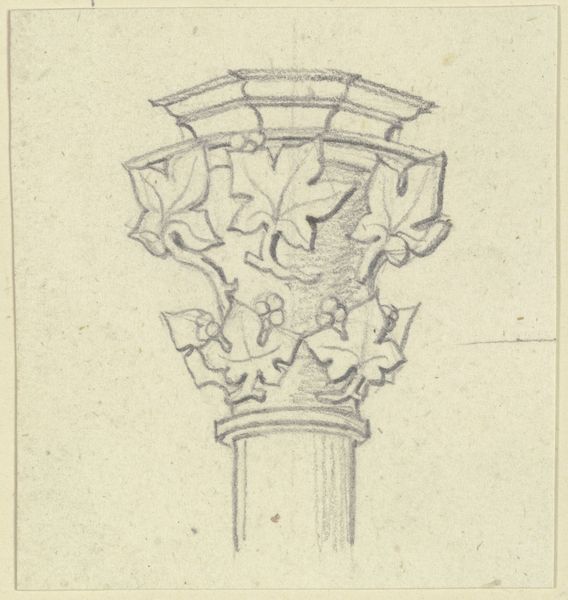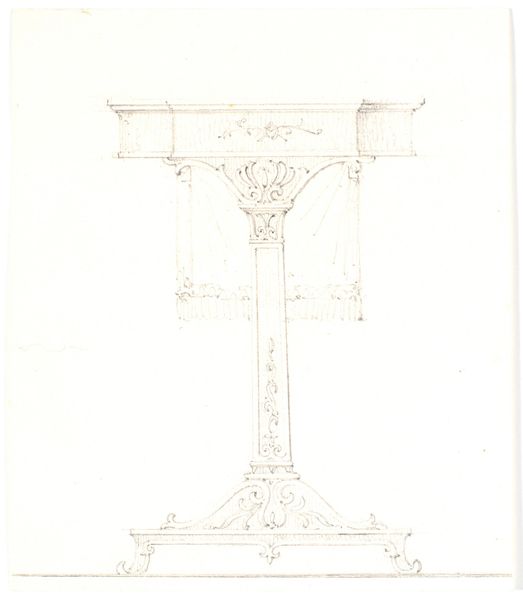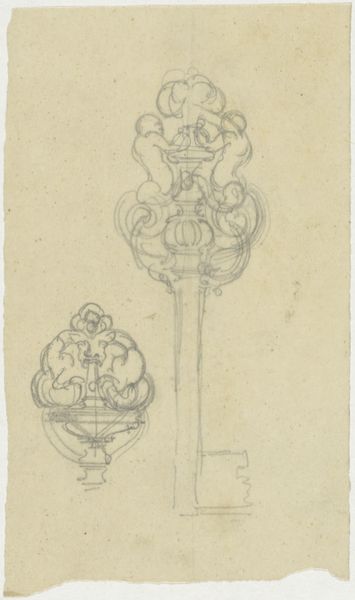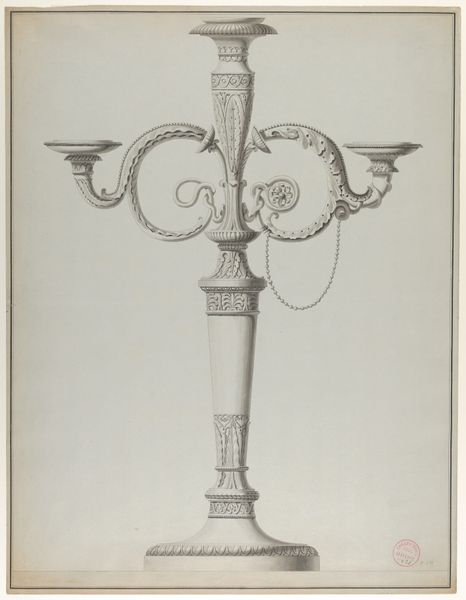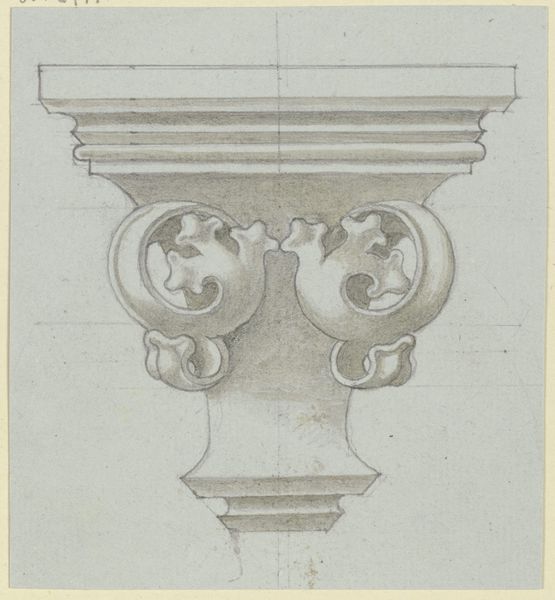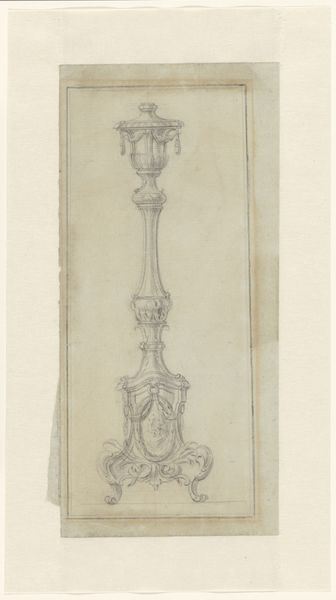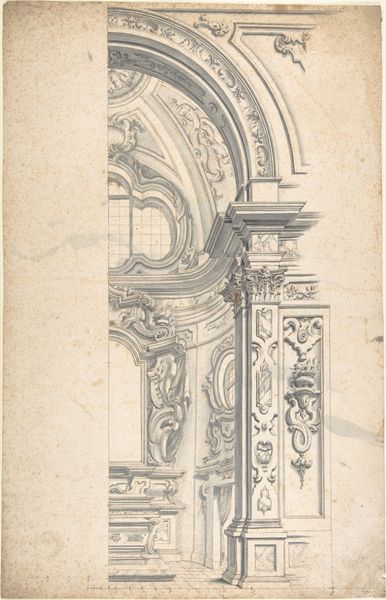
drawing, ornament, pencil, architecture
#
drawing
#
aged paper
#
ornament
#
toned paper
#
light pencil work
#
16_19th-century
#
shading to add clarity
#
pencil sketch
#
old engraving style
#
hand drawn type
#
form
#
personal sketchbook
#
german
#
geometric
#
pencil
#
line
#
sketchbook drawing
#
sketchbook art
#
architecture
Copyright: Public Domain
Editor: This is a drawing titled "Finial," and attributed to Karl Ballenberger. It’s a pencil sketch on toned paper, seemingly of an architectural element. There's something very precise and technical about the linework, almost like a blueprint. What strikes you most about the piece? Curator: It's intriguing to consider the process itself. We see the trace of the artist's hand, the graphite leaving its mark on the paper. Was this a preparatory sketch, meant to guide a craftsman in the creation of an actual finial, perhaps in stone or metal? Consider the social context – the division of labor between designer and maker. Editor: So, it's not just the image, but what the image represents in terms of production? Curator: Precisely! Think about the hierarchies embedded within the art world and architectural trades of the 19th century, the way “high art” often overshadows the skilled labor involved in creating functional or decorative objects. The "ornament" here, according to the metadata, might be considered less important than a history painting. Why is that? Where was this finial going to be? Editor: I hadn’t thought about that division. So you are wondering, if it wasn't "high art", how the materials informed function, which then spoke to social context? It wasn't created in a vacuum. Curator: Exactly. The type of stone, the metal, even the pigments if it was painted—these choices reflect not just aesthetic preferences but economic realities and social values. What was Ballenberger trying to show about material wealth? Editor: I see that now. It makes me wonder about the intended audience, too. Someone had to be able to read and interpret this drawing. Curator: Indeed. We're looking at more than just an object; we're looking at a record of production, consumption, and social stratification, materialized in this simple drawing. It invites questions about how art reflects and shapes the world around it, questioning high and low culture, design and ornament. Editor: That's given me a completely new perspective. I was so focused on the image itself, I didn’t think about the layers of context embedded in its creation and use. Curator: Material concerns and an approach focused on class open the drawing up far more than the pretty sketch that it seems. It suggests further social questions we need to continue to discuss in museum curation.
Comments
No comments
Be the first to comment and join the conversation on the ultimate creative platform.


